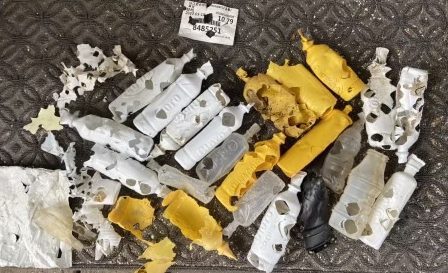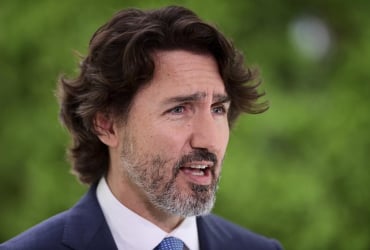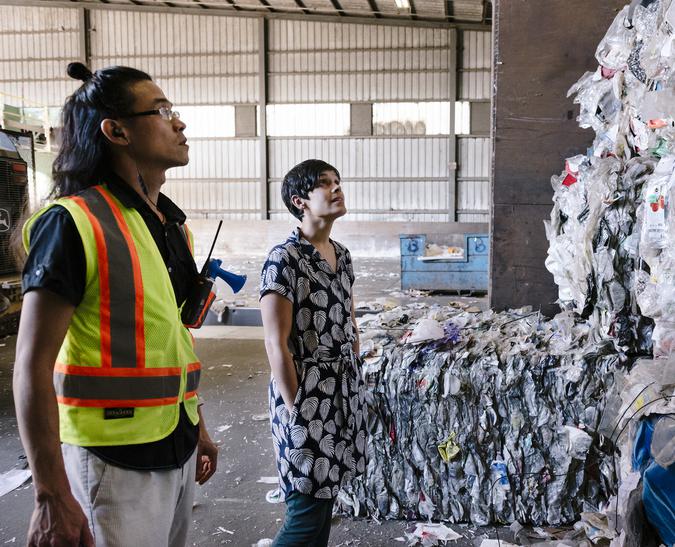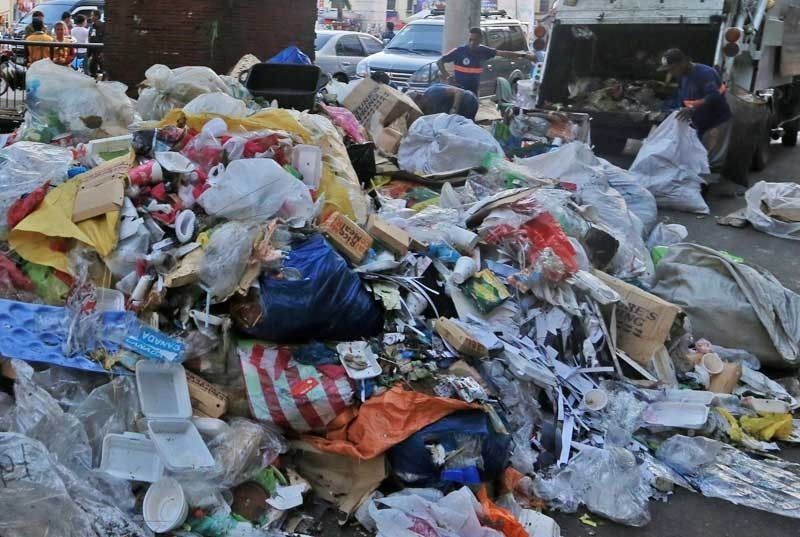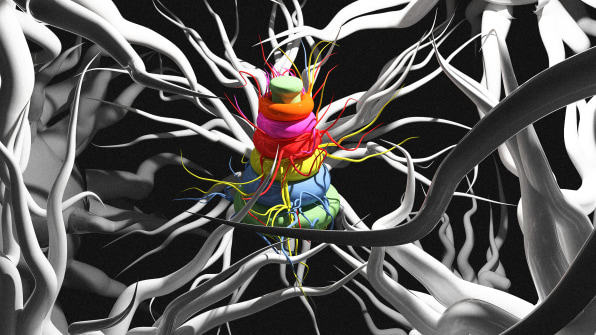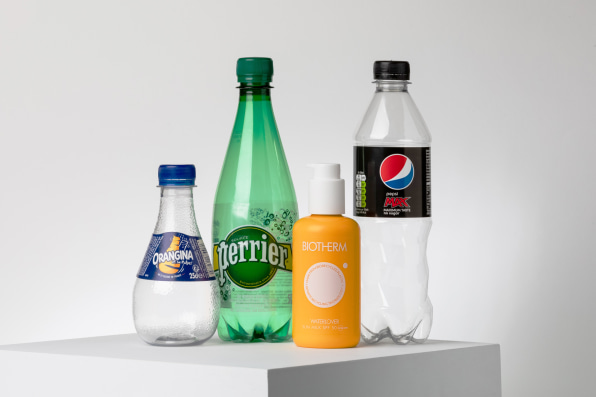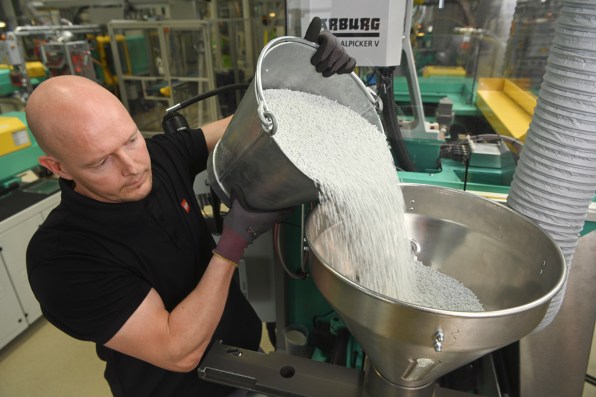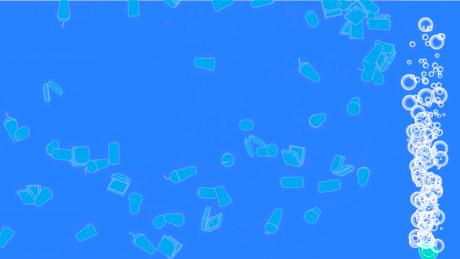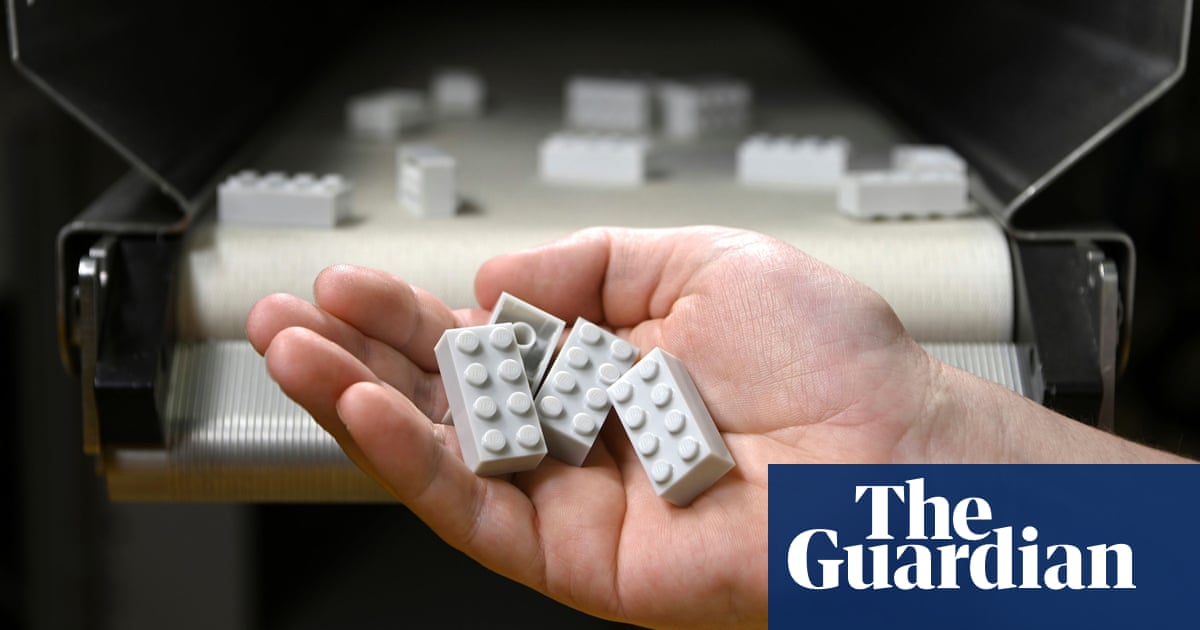Increasing plastic pollution harming sea turtles along the Gulf Coast | WKRG Skip to content ✕ × Close Ad
Category Archives: Plastic Pollution Articles & News
West Coast cleanup nets over 200 tonnes of marine debris
For weeks at a time, crews have been scouring remote sections of the West Coast — digging out massive fishing nets, hauling lines, tossing thousand of buoys and shifting mountains of Styrofoam to try to make a dent in the ocean refuse finding its way onto B.C.’s wildest shores. A shocking 210 tonnes of flotsam and plastic detritus was removed over six weeks from a mere 300 kilometres of the province’s intricate 25,000-kilometre shoreline during this year’s massive cleanup of the ecologically sensitive foreshores of the Great Bear Rainforest. “It’s just perpetual. It just keeps washing ashore,” said Scott Benton, executive director of the Wilderness Tourism Association. Get top stories in your inbox.Our award-winning journalists bring you the news that impacts you, Canada, and the world. Don’t miss out.“It’s a huge volume of garbage. And a very small portion of the coast when you consider how many kilometres of coastline there is in B.C.” The industrial-scale effort involved a fleet of nine small-ship ecotourism vessels crewed by 150 people who would have otherwise been out of work this May and June due to COVID-19 travel restrictions, Benton said. The undertaking also required an immense barge, a helicopter, a contingent of small boats and partnerships with the Kitasoo/Xai’xais, Gitga’at, Haisla, and Gitxaala nations. What people are reading Wilderness tourism staff collected fishing nets, thousands of buoys and mountains of Styrofoam to try to make a dent in the ocean refuse finding its way onto B.C.’s wildest shores. Photo Jeff ReynoldsBut the results speak for themselves as the enterprise, benefiting from previous experience, managed to almost double the 127 tonnes of trash picked up last spring during the inaugural launch of the provincial initiative, Benton said. In April, the province backed the initiative again, divvying up $9.5 million from the Clean Coast, Clean Waters Fund to four groups or associations in an effort to remove garbage from 1,200 kilometres of shore, or more than 100 derelict vessels along the north coast down to southern Vancouver Island. In addition to providing pandemic relief to the embattled wilderness tourism sector, the project was a response to the call for action around marine debris from coastal communities, said Environment Minister George Heyman. “It can feel like you’re putting a Band-Aid on an artery,” says Quadra Islander Breanne Quesnel on collecting marine debris. “But we live in this this beautiful place, and you just want to do what what you can to help, rather than hurt it.” Local governments and resident complaints involved derelict vessels, mooring buoys, polystyrene foam, aquaculture and fishing debris, and single-use plastics, he added. “The scale of the problem is massive, and we need to do much more to address ocean debris and its devastating impacts on marine life and food sources,” Heyman said. The vast majority of the ocean trash being removed from B.C.’s pristine shores is plastic, said Jeff Reynolds, a biologist and guide with Maple Leaf Adventures, who has been involved in the cleanup both years. Each year, globally, about eight million tonnes of plastic waste enters oceans. This translates to the dumping of a garbage truck of plastic into the sea every single minute. “It’s not just local, the debris is from all over the world,” Reynolds said.The gruelling work to collect it involved scrambling over rough terrain and tangled masses of driftwood to shift, pile, and sort garbage before loading it onto boats headed for the barge, or for pick up by helicopter directly from the beach. By weight, 50 per cent of what he and his crew mates wrestled from the shores exposed to the Pacific was nylon fishing nets or lines, Reynolds said. In terms of volume, crumbling foam from docks or floats, along with plastic buoys or floats, were the most common offenders. And then there were the ubiquitous plastic bottles. The team likely picked up around 90,000 of them, he said. Reynolds was heartened that this year rather than just dumping the debris in landfills, roughly 60 per cent of it was sorted for recycling. And despite the labour involved, the effort was worth more than just getting a paycheque during the pandemic, he said. “We all really care for this coast,” he said. “And there’s been a real incredible response, and I’ve enjoyed being part of such an impactful program.” Quadra Island Beach Clean Dream Team Quadra Island resident Breanne Quesnel and her sons Eamon and Rowan sort marine debris gathered by community volunteers. Photo by Rochelle Baker The past two years, the Clean Coast initiative has been the largest organized effort to clean the province’s shores in B.C. history. Yet for decades, most of the heavy lifting to clean B.C.’s beaches is typically done by community volunteers or non-profit groups (ENGOs) that often face funding, infrastructure or workforce hurdles. And the pandemic hasn’t made coastal community efforts to protect shorelines any easier, but some groups persevered regardless.When Quadra Island resident Breanne Quesnel saw her community’s annual spring beach cleanup cancelled due to COVID-19 for a second year, she felt she could help. Loads of dedicated individuals were still gathering garbage, but without the annual organized effort, there wasn’t anywhere to put it or any way to get a large amount of debris off the island, said Quesnel, co-owner of Spirit of the West Kayaking. So, Quesnel reached out to the regional waste management authority and collaborated to put a 40-yard collection bin in the parking lot of her business. With the costs covered by the regional waste authority, she helped set up a depot where islanders could sort and pile recyclables, and dump the rest of the debris for transport off island. “You know, we’re just a private entity, and we could provide the facility and some labour to help,” she said. “There are so many incredible volunteers on Quadra who have been busy collecting debris and stashing it, but needed a place to put it.” Quadra Island resident Nevil Hand organized the Facebook Quadra Island Beach Clean Dream Team so volunteers could co-operate to clean beaches during COVID-19. Photo courtesy Nevil HandNevil Hand, a retired firefighter, is one of the volunteers consistently walking the island’s shores. Frustrated that the pandemic had quashed yet another community cleanup, he organized a Facebook group, the Quadra Island Beach Clean Dream Team, as one way to organize and collaborate with other individual volunteers. “My motto is: Pick up what you can, where you can, when you can,” Hand said. People typically put the bigger beach trash in piles for pickup or use the social media group to communicate with one another about where they have cleaned. While the dumpster on the island has made things easier, it’s still a challenge to get any level of government to deal with larger items residents can’t manage due to lack of proper equipment or transport. Case in point is an enormous industrial marine bumper that washed ashore on one of the island’s remote beaches in the early spring and has yet to be removed by authorities or its owner. The structure is at least 60 feet long and made from loader tires and huge steel girders, he said. “It’s still there,” Hand said. “There’s no accountability. Government doesn’t want to find them and industries leave all their crap up and down the coast and let somebody else deal with it.” Quadra Islanders want more accountability from industry when it comes to cleaning up marine debris. Photo courtesy of Nevil HandAs a mom and business owner that benefits from the coast’s spectacular wilderness, Quesnel said making an effort is necessary despite the enormity of the ocean’s plastic problem. “It can feel like you’re putting a Band-Aid on an artery,” Quesnel said. “When you’re watching your kids play on the beach, you wonder what the ocean will be like when they’re older. “But we live in this beautiful place, and you just want to do what you can to help, rather than hurt it.”[embedded content]Rochelle Baker / Local Journalism Initiative / Canada’s National Observer
What comes after this plastic-filled pandemic?
When Jodi Sherman first started working in hospitals, she was struck by the amount of plastic used on a daily basis. She wondered how single-use plastics could be consistent with the Hippocratic oath’s first principle to “do no harm.”
“It’s clear that these materials come from somewhere and they go somewhere and they must be causing harm,” says Sherman, an anesthesiologist at Yale New Haven Hospital and founding director of the Program on Healthcare Environmental Sustainability at the Yale Center for Climate Change and Health.
But not all of her colleagues and patients see it that way, since plastic is an embedded feature of patient care. According to the Healthcare Plastics Recycling Council, 20–25% of all hospital waste in the United States is plastic—amounting to more than 1 million tons annually.
This wasn’t always the case—plastic’s prominence in hospitals dates back less than 100 years. But during the postwar plastic boom of the 1940s, medical professionals seized on its utility.
“The temptation for mass one-use disposal was irresistible,” says Robert Friedel, professor emeritus of history at the University of Maryland.
In Rome, a young girl is allowed to hug her father through a plastic tent. Photo by Filippo Monteforte/AFP.
That temptation was only amplified by plastic’s convenience, relatively low cost, and efficacy in certain situations, adds Friedel. Rigid plastics revolutionized products like the hypodermic syringe—historically made from glass—by making it cheaper to produce at scale.
Even the plastic straw—a source of modern consternation—has roots in medicine. In 1937, Joseph Friedman invented what we now know as the bendy straw, though his model was made from paper. His first sale was to a hospital, after nurses recognized its utility for patients with limited mobility.
“The medical community got away with it for a very long time, but the sheer volume of medical waste is beginning to catch up with them,” Friedel says.
Many medical facilities across the U.S. have some kind of recycling program, but market disruptions, factory closures, and pandemic-related shipping delays have introduced hurdles to seamless recycling.
“The recycling market for certain plastics in health care [is] very troublesome right now,” says Janet Howard, member engagement director with Practice Greenhealth, a nonprofit that, among other health care sustainability efforts, partners with medical providers to reduce waste. “We’d rather look for opportunities to go back to reuse.”
But getting medical professionals and patients to be comfortable with reused plastic that’s been exposed to a world of pathogens—especially in the middle of a global pandemic—can be tough. It involves getting over what Howard calls the “ick” factor of health care and undoing decades-old cultural beliefs in the sanitary nature of single-use plastics.
At a hospital in Oguchi, Japan, plastic sheeting divides sterile and non-sterile areas on a coronavirus ward. Photo by Carl Court/Getty Images.
Certain items, like small IV tubing and IV catheters, would be dangerous to reuse, Sherman says. But many other items can be. The World Health Organization reports that 85% of medical waste is not infectious. And evidence shows that many items could see a second life through Single-Use Device Reprocessing, though the process has its critics.
The process allows for the FDA-approved disinfection, cleaning, and remanufacturing of certain items with plastic parts like pulse oximeter sensors and tourniquets.
“The ‘single-use disposable’ label is not a regular label,” explains Sherman. “It’s a manufacturer-invented label. … Just because something is labeled ‘single-use disposable’ does not mean it can’t be reused.”
In other cases, the solution may be to revert to rigid, reusable plastics and glass containers, rather than the flimsy throwaways that replaced them.
Blue wrap is a conspicuous contributor to plastic waste in operating rooms. The #5, bright blue polypropylene plastic is used to sterile-wrap surgical equipment. The total amount of blue wrap waste is astonishing: One Canadian study found that just one type of surgery—total knee arthroplasty—generated more than 167,000 pounds of blue wrap waste from 2008 to 2009 in Canada.
At Boston Medical Center, unused ventilators are covered in plastic. Photo by Erin Clark/Boston Globe.
But Practice Greenhealth suggests that blue wrap can often be easily replaced with reusable hard cases that don’t need to be tossed after just one use. And they can save hospitals money along the way.
Hospital sharps containers offer another simple opportunity for reuse. Instead of chucking the whole container—used to safely dispose of needles and other sharp biohazardous waste—reusable containers can be taken to a processing facility to be emptied and disinfected.
Howard says the pandemic has highlighted how building out local supply chains, rather than banking on international manufacturers, can strengthen reuse and recycling projects.
“Our work [at Greenhealth] is really connected to community resilience,” Howard says. “The good news is that working with local businesses and putting down your roots in your community, investing in the local businesses, prepares you for crisis. And that could be extreme weather events, or it could be a pandemic. Whatever it may be.”
Jaime Kaiser
is a freelance environment journalist and audio producer based in New York City.
Bay Area group sues Coca-Cola over plastic pollution 'greenwashing'
A Bay Area environmental group is suing Coca-Cola for false advertising, accusing the multinational beverage corporation of “greenwashing” its image despite generating more plastic pollution than any other company in the world.The Earth Island Institute in Berkeley filed the lawsuit in the District of Columbia Superior Court this month, arguing that Coca-Cola cannot lawfully advertise itself as a sustainable or environmentally friendly company while generating millions of tons of plastic waste every year.
The complaint argues that the soft drink giant is deceiving consumers by using the word “sustainable” in its marketing and making unrealistic recycling claims.
“Coca-Cola will never be a truly sustainable company unless it moves away from its reliance on single-use plastic entirely, which it has no plans to do,” according to the lawsuit.
Coca-Cola spokesperson Ann Moore declined to comment on the lawsuit, but said in an email that the company recognized its “responsibility to help solve the global plastic waste crisis.” The company, she said, has committed to collecting “a bottle or can for every one we produce and recycle it” by 2030.
Chemicals in plastic wastes contaminate food chain – study
MANILA, Philippines — Burning and improper disposal of plastic wastes lead to contamination of the food chain, especially in developing countries like the Philippines, a global study showed.
In a study released by the International Pollutants Elimination Network (IPEN) with the environmental watchdog EcoWaste Coalition, it was shown how common disposal methods of plastic waste such as by burning and dumping, as well as their exportation, end up contaminating the food supply and threatening community health.
The study, titled “Plastic Waste Poisoning Food and Threatening Communities in Africa, Asia, Central and Eastern Europe, and Latin America,” involves analyzation of egg samples obtained from free-range chicken eggs in the vicinity of various plastic waste disposal sites and facilities from 14 countries.
The countries included in the study were Belarus, Cameroon, Czech Republic, Gabon, Ghana, China, Indonesia, Kazakhstan, Kenya, Mexico, Philippines, Tanzania, Thailand and Uruguay.
The egg samples were analyzed in European laboratories. The IPEN explained that egg analysis was employed for the study as eggs easily show traces of contamination with persistent organic pollutants (POPs) because of their significant lipid content where POPs like dioxins can accumulate and “because eggs from contaminated areas can readily lead to exposures that exceed thresholds for the protection of human health.”
For the Philippines, the egg samples were obtained near a hazardous waste incinerator in Trece Martires City in Cavite, and in a neighborhood in Caloocan City where electronic waste (e-waste) dismantling is taking place.
The egg samples were specifically analyzed for dioxin, a common byproduct of plastic waste open-burning, crude recycling, chemical production and incineration technologies. The eggs were also analyzed for the presence of other POPs, collectively known as “flame retardants” which have been banned or are in the process of being banned globally through the Stockholm Convention on POPs.
Based on the laboratory analyses, all the egg samples from the 14 countries contain various kinds of toxic chemicals “many of which are banned or regulated,” including chemical additives polybrominated diphenyl ethers, polychlorinated biphenyls (PCBs), short-chained chlorinated paraffins and unintentional byproduct POPs like dioxins.
The study found that the levels of dioxin and PCBs in eggs in some locations “were so high that residents could not eat a single egg without exceeding the health safety threshold limits for these chemicals established in the European Union.”
The “extremely high” levels of dioxin were specifically observed in the egg samples from seven African and Asian countries, including the Philippines. The report noted that egg samples from these countries were collected near facilities “where plastic waste is, or was either used as fuel or incinerated, often in combination with other waste.”
For instance, egg samples obtained near tofu factories using plastic waste as fuel in Tropodo, Indonesia had dioxin levels between 140 to 200 picogram (pg) toxicity equivalent (TEQ) g-1 fat, way in excess of the European Union’s limit of 2.5 pg TEQ g-1 fat for chlorinated dioxins in eggs.
Analyzed eggs from the Philippines, meanwhile, had dioxin levels ranging from 5.3 to 53 pg TEQ g-1 fat.
The experts involved in the study said that using non-combustion alternative methods, instead of waste-to-energy incineration technologies, for the treatment of hazardous waste and other wastes can prevent the creation of unintentional POPs formed during the burning process.
The study also called on the plastic industry to invest in safe plastic alternatives, eliminate toxic chemical additives to plastics, list plastic ingredients on labels, and create closed-loop systems that don’t create toxic waste.
“Dioxins and other POPs remain in the soil for decades or even centuries, creating a reservoir of highly toxic contaminants that poison the food chain now and will continue to do so for a long time into the future,” said Jindrich Petrlik, study co-author and Toxics and Waste program director of Arnika Association.
“This report confirms that the harm being caused by plastic waste exports is not limited to visible litter and pollution, but includes the insidious damage to human health caused by contamination of the food chain in importing countries. Toxic chemical additives and the world’s most hazardous substances are literally bleeding into the food supply of those countries least able to prevent it,” Lee Bell, IPEN’s policy advisor on POPs, added.
As for the Philippines, EcoWaste Coalition chemical safety campaigner Thony Dizon said the findings of the study strengthen their resolve to push for state policies against hazardous wastes.
“This global study provides advocates for a zero waste and toxics-free society in our country with critical data to justify strong policy solutions to curb plastic and chemical pollution, including a ban on hazardous waste imports such as electronic waste and plastic waste often disguised as scraps for recycling, a ban on non-environmentally acceptable products and packaging, and the enforcement of the ban on waste incineration, including proscribing burn or thermal waste-to-energy technologies,” Dizon said.
Plastic is far more toxic than we thought
You know that phthalates and flame retardants are toxic. But a new study finds that a quarter of all chemicals in plastics could be equally harmful to you.
[Source Image: twin97/Blendswap]
By
These bottles are made from plastic recycled by enzymes
The enzymes break down plastic to the molecular level, making it easier to use different kinds of plastics to make new bottles.
[Photo: Jérôme Pallé/courtesy Carbios]
By
Lego found a way to build its bricks out of recycled plastic
A single one-liter bottle can be recycled into material for around 10 standard two-by-four Lego bricks.
[Photo: Lego]
By
Drones are helping to clean up the world's plastic pollution
The problem is so far-reaching it’s hard to know where to start cleaning it up. But UK-based startup Ellipsis Earth believes it can help. Using drones fitted with cameras, Ellipsis maps the location of plastic pollution. Through computer software and image recognition, it’s then able to identify the type of plastic, its size, and in some cases, even the brand or origin of the trash. This data can be used to inform solutions.Ellipsis uses image recognition software to map trash. (courtesy Ellipsis Earth Ltd)”We would be able to find out that ‘Beach X’ has a ton of fishing nets and discarded lobster traps, whereas ‘Beach Y’ has a ton of hygiene and sanitation wet wipes,” says Ellie Mackay, Ellipsis founder and CEO. For the Beach X scenario, “we need to speak to the fishing industry and get some regulation around dumping of ghost nets,” she tells CNN. Whereas for Beach Y, “it’s about educating people not to flush things down the toilet and speaking to local sewage outlets.”The technology allows Ellipsis to carry out a survey in a matter of minutes — much faster than the typical method on foot. Mapping the worldThe startup, which was officially founded in 2019 following several years of research and development, has undertaken projects all over the world — from the UK coastline to the banks of the Ganges river in India. The project that hit home most for Mackay was in the Galapagos Islands, roughly 620 miles off the coast of Ecuador. “There are coastlines there that have not changed since [Charles] Darwin set foot on those beaches, all those years ago,” she says. “The only difference — the only evidence that man exists — is in the plastic all over the beaches.”Data gathered by Ellipsis in 2017 and 2018 found that on one of the most remote beaches in the area, you are never more than 43 centimeters (17 inches) away from a piece of trash, says Mackay. But such shocking data has led to action. Since the Ellipsis baseline survey, Mackay says that Galapagos authorities have introduced a ban on single-use plastics, including Styrofoam takeaway containers and plastic bags, across the archipelago. While the majority of plastic that washes up on the islands’ shores comes from elsewhere (most of the islands are uninhabited and the population is only around 25,000), the ban extends to tourists and service providers. Another Ellipsis project based in Sorrento, Italy, surveyed cigarette butt littering, leading to an education campaign and more strategic placement of bins and ashtrays across the town. According to Ellipsis, the campaign has resulted in a 70% reduction in cigarette littering.Meanwhile, the startup’s ongoing project in Bournemouth, UK, will inform the local council of trash hotspots, so that it can provide extra bins or alter street cleaning schedules. Richard Thompson, professor of marine biology and director of the Marine Institute at the University of Plymouth in the UK, says that this solution-based approach to gathering data is vital.While there is plenty of evidence to prove that plastic pollution exists worldwide, there is still a lack of targeted data that can be used to inform effective solutions, he says.Tech evolutionThe use of aerial imagery to map plastic pollution is not new. Thompson recalls a time before drones, when scientists experimented with sending up balloons with cameras attached to take aerial photos of beaches. More recently, the European Space Agency used satellites to identify plastic pollution. “But what’s happening here is that the technology for drones and also the image resolution has improved quite substantially over time, making it much more viable,” says Thompson.Mackay agrees. “Drones are a game changer for environmental monitoring. They allow us to survey an entire stretch of coastline … in a few minutes,” she says, adding that Ellipsis technology can automatically detect 47 categories of trash items with more than 95% accuracy.However, there are limits to what the Ellipsis technology can detect. Microplastics — plastic particles smaller than five millimeters, of which at least 14 million metric tons are estimated to be sitting on the ocean floor alone — cannot be identified.But Mackay argues that by focusing on tracking and mapping larger plastic items they are helping to solve the problem at its root. “If you collect one plastic bottle, that’s 25,000 potential microplastic pieces in the future,” she says. Thompson believes this is the right approach. He says the majority of plastic entering the ocean is in the form of bigger waste items that later break down. “That’s really the place where you want to intervene and the place where you want the data. It’s far simpler to count and identify the microplastics of the future,” he says, adding that different techniques will be required to quantify plastic particles — such as microbeads from cosmetics — that are already small when they enter the environment.Ultimately, Mackay’s goal is not to stop the use of plastic altogether — she recognizes what an “amazing” and useful material it is — but rather to improve management of it. “By mapping trash around the world, we’ll be able to target our solutions effectively,” she says, creating a “lasting impact through behavior change and education, (so) that we’ll be able to minimize the amount of mismanaged waste.”#video_1606835203041{margin:20px 0;}#video_1606835203041 video,#video_1606835203041 img{margin: 0; position: relative; width: 100%;}.cap_1606835203041{-webkit-font-smoothing:antialiased;padding:0 0 5px 5px; font-size:16px; color:#595959;}.cap_1606835203041:before{content:””;display: block;height: 1px;margin-top: 10px;margin-bottom: 10px;width: 80px;background-color: #C5C5C5;}.cap_1606835203041 >span{color:#C5C5C5;}@media(orientation:landscape){.video_1606835203041{display:block;}.Mvideo_1606835203041{display:none;}}@media(orientation:portrait){.Mvideo_1606835203041{display:block;}.video_1606835203041{display:none;}}
Lego develops first bricks made from recycled plastic bottles
Lego has unveiled its first bricks made from recycled plastic bottles and revealed that it hopes to include the pieces in sets within two years. The Danish company, which takes its name from the Danish words for “leg godt”, meaning “play well”, makes billions of bricks a year, most of them from a plastic called …
Continue reading “Lego develops first bricks made from recycled plastic bottles”

